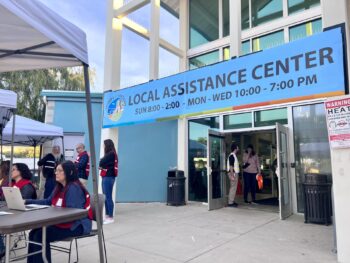The San Diego County Medical Examiner’s Office is playing a key research role in a national study that seeks to determine a cause and identify babies who would be at risk for Sudden Infant Death Syndrome (SIDS).
The study is still in progress, but recently found that an abnormality of the brain’s hippocampus, which helps regulate breathing and heart rate pattern, was present in about 43 percent of infants who died of unexplained causes.
The finding was based on examinations of sections of hippocampus from 153 infants autopsied in San Diego County between 1991 and 2012. Their deaths were classified as unexplained. The findings are not yet definitive, but add to a growing body of evidence that brain abnormalities may underlie many cases of SIDS.
It is unknown why the abnormality was not seen in all the infants who died of SIDS, but researchers theorized that SIDS could be caused by several different factors, or underlying instabilities in the infant. The hippocampal abnormality was also seen in a smaller number of infants who had died of known causes.
“Little by little, researchers and physicians are chipping away at SIDS,” said Deputy Medical Examiner Othon Mena, one of the lead pathologists on the study for his office. “The SIDS category used to encompass more deaths and it has been narrowed and narrowed.”
Some of the deaths previously attributed to SIDS include metabolic disorders and cardiac arrhythmias, he said.
“The hope is that research efforts in this area eventually will provide the means to identify vulnerable infants so that we’ll be able to reduce their risk for SIDS,” said Dr. Marian Willinger, special assistant for SIDS at the Eunice Kennedy Shriver National Institute of Child Health and Human Development (NICHS) in a news release. NICHD funded the study.
The same team determined earlier that many infants who died of SIDS showed low levels of the neurotransmitter serotonin and other serotonin receptors in the brainstem, which affects breathing, heart rate patterns, blood pressure, temperature regulation and arousal from sleep. As a result, researchers are investigating any potential connection between the hippocampal abnormality to brainstem serotonin abnormalities in SIDS babies.
Another notation in the study is that the hippocampal abnormality is similar to a hippocampal abnormality found in some cases of epilepsy. Other research groups have theorized that an unwitnessed seizure could be the cause of some SIDS deaths, but at this time there is not enough evidence to support that a seizure was a cause of death in many SIDS cases, researchers said in the report.
The long-term study is being conducted by Dr. Hannah C. Kinney and colleagues at Boston Children’s Hospital, Harvard Medical School in Boston, the San Diego County Medical Examiner’s Office and the Baylor College of Medicine in Houston. The study is funded by the Eunice Kennedy Shriver NICHD as part of the National Institutes of Health.
The Medical Examiner’s Office has collaborated in SIDS research since 1991, said Elisabeth Haas, director of the ME’s San Diego SIDS/SUSC Research Project. The office became involved in the project after former San Diego County Chief Medical Examiner Dr.Brian Blackbourne met with Dr. Kinney and Dr. Henry Krous, who recently retired as chief of pathology at Rady Children’s Hospital. Krous initiated the project, Haas said.
Listen to one couple’s story of losing their child to SIDS and learn ways of safe sleeping for your infant.





